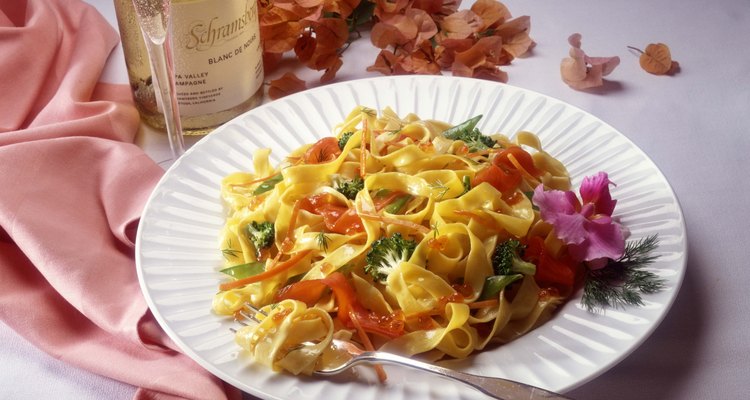
Jupiterimages/Comstock/Getty Images
Italian cuisine is famous around the world for its richness and diversity. Typically prepared with fresh ingredients from recipes spanning generations, Italian food is an integral part of Italian heritage and one of the country’s main cultural exports. Restaurants serve Italian food in just about every international city, and Italian cookbooks can be found in almost any bookstore. Although many people associate Italian food with a few standard dishes like pizza and spaghetti Bolognese, there is actually tremendous diversity among the various regional cuisines of Italy.
History

Hemera Technologies/AbleStock.com/Getty Images
The origins of Italian food can be traced as far back as the 4th century BC. The typical cuisine in Ancient Rome included boiled cereals, lentils, chickpeas, legumes, sweet wine, fish, fruits and bread. The spice trade following the Crusades had a tremendous influence on Italian cuisine and brought improvements in flavor and food preservation. During the age of exploration, a number of important foods were added to the Italian diet, including tomatoes from the New World and coffee of Turkish origin. Italian cuisine continued to diversify and expand during the Renaissance. During the 17th, 18th and 19th centuries, aristocrats would consume sumptuous feasts during most social events. Café culture developed shortly after. In the 20th century, Italian cuisine witnessed many changes in food preparation and storage.
Main Ingredients
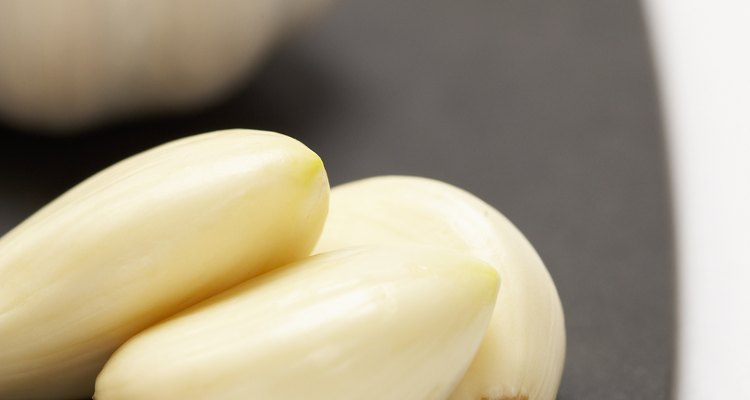
Jupiterimages/Photos.com/Getty Images
Though Italian cuisine does vary greatly among different regions, there are a number of ingredients that are considered essential in Italian food. Olive oil, garlic, basil, oregano, mozzarella, ricotta, parmigiana, capers, tomatoes, sausage and different kinds of pasta are all common ingredients in traditional Italian meals.
Regional Variations

BananaStock/BananaStock/Getty Images
In the north of Italy, butter is generally preferred over olive oil and rice and corn are more common than pasta. Typical country game meats, such as rabbit or quail, are common in the north. The most iconic and widely recognized Italian food comes from the central region, which includes Tuscany and Rome. This region is home to world-famous cheeses, olive oils, cured meats and tomato sauce. The south of Italy is where pizza originated and is home to rich, spicy sauces and some of the best olive oil in the world. Chefs cook almost exclusively with olive oil in this region.
Meal Structure
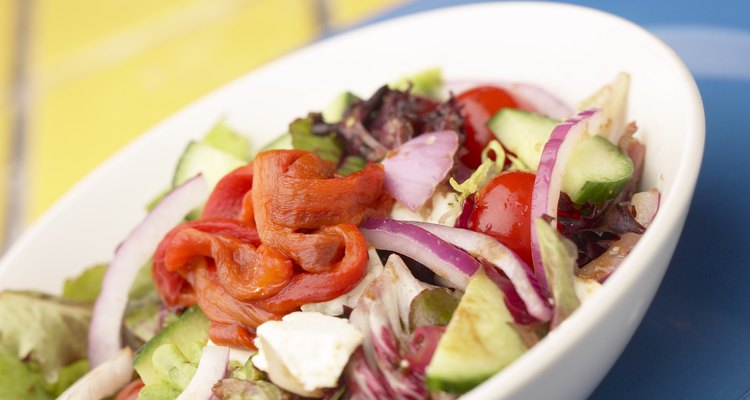
Hemera Technologies/AbleStock.com/Getty Images
The traditional meal begins with wine and bread accompanied by olive oil or butter. The first course, or il primo, is typically a pasta or risotto dish. The second course, secondo, is something more substantial like a fish or meat dish accompanied by a side of vegetables. Salad is then served in order to cleanse the palate and help the digestive process by cutting through the fats in the meat or fish. Finally, the dessert, il doce, is served, immediately followed by espresso or an after dinner drink like grappa. Italian meals are typically very long and slow, sometimes lasting more than five hours.
International Influence
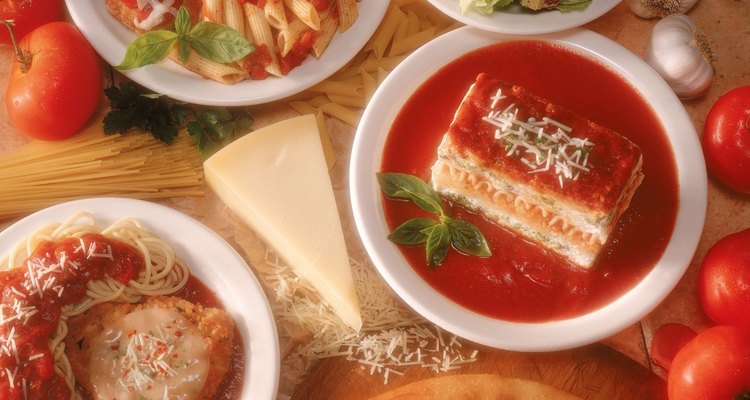
Jupiterimages/Comstock/Getty Images
Italian food has been very influential around the world, especially in places where there are many people of Italian descent. In the United States, for example, a new cuisine known as Italian-American cuisine developed in the late 19th and early 20th century due to the influx of Italian immigrants. Argentine food is also heavily influenced by Italian cuisine, a result of massive immigration from Italy during World War II.
Related Articles

African Food Facts
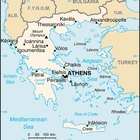
Staple Foods in Greek Culture

List of Cuban Foods

Appetizers in Elizabethan Times

Bohemian Cooking

The History of Asian Food

The Parts of a Traditional French Meal

Traditional French Easter Food

Description of Spanish Foods

Typical Portuguese Diet

Hopi Indian Foods

Italian Cuisine Characteristics

History of African Peanut Soup

What Type of Food Do People in Honduras ...

Victorian Banquet Menus

Vietnamese Diet

What Is Gourmet Food?

The History of Bread Pudding

What Is Artisan Bread?

Restaurants on 50th - 52nd Street in ...
References
Writer Bio
Charlie Higgins is journalist, editor and translator based in Buenos Aires, Argentina. He has written for a variety of lifestyle and niche market websites, including International Food Trader, The Olive Oil Times, microDINERO, Sounds and Colours, Connecting Worlds and The Buenos Aires Reader.
Photo Credits
Jupiterimages/Comstock/Getty Images